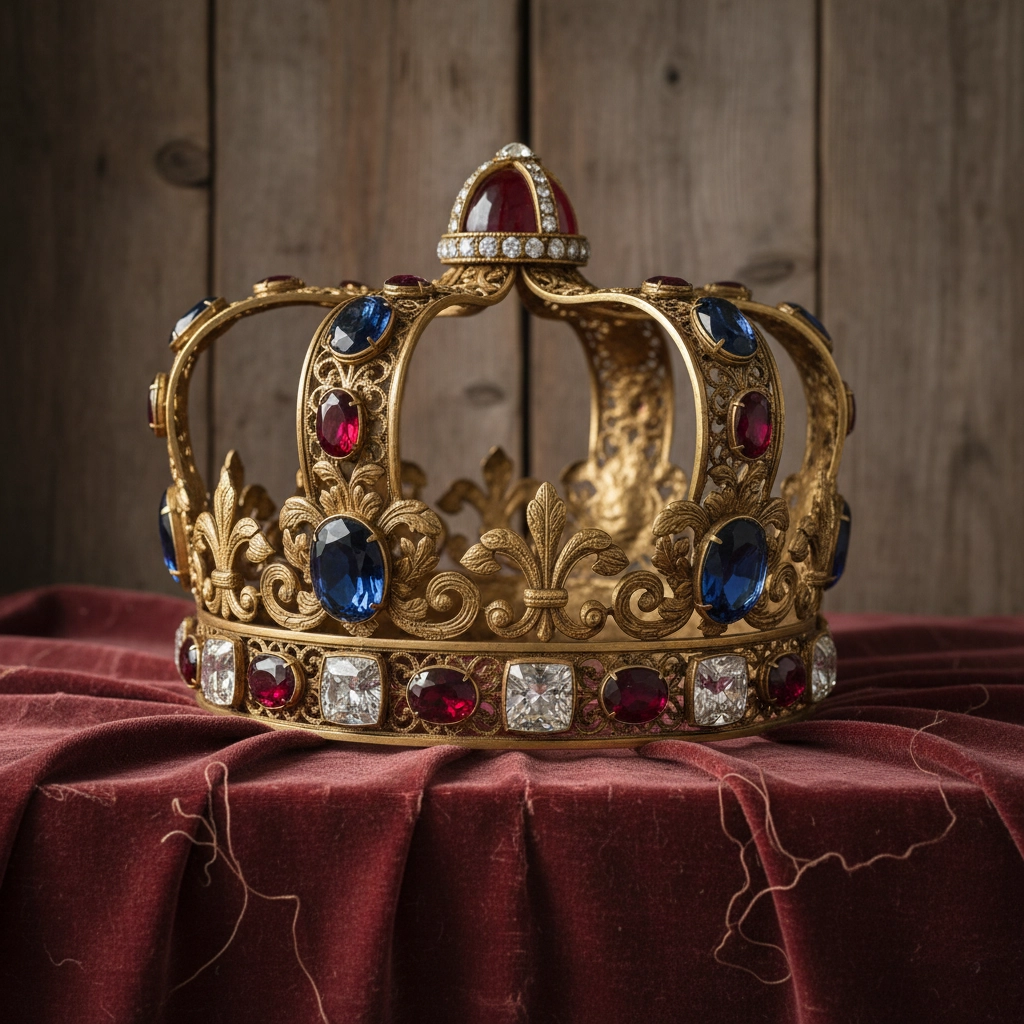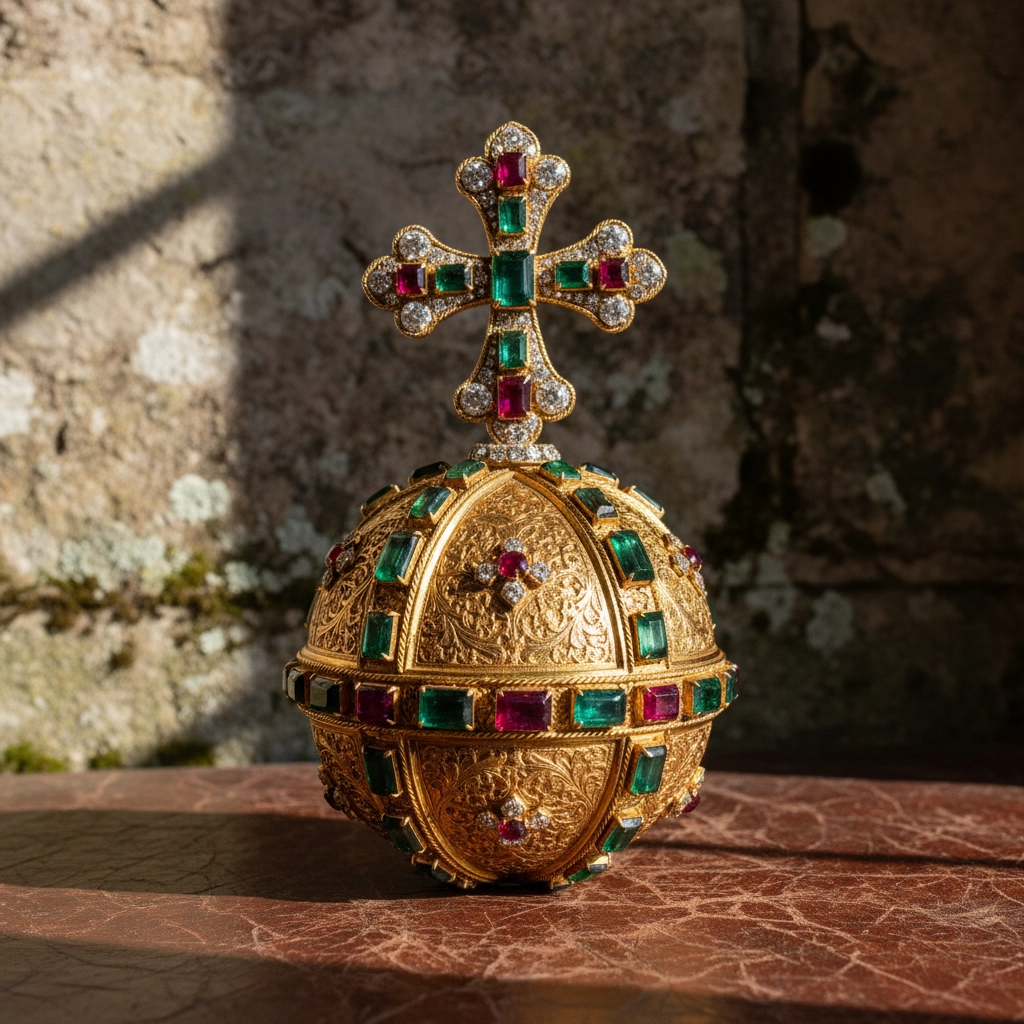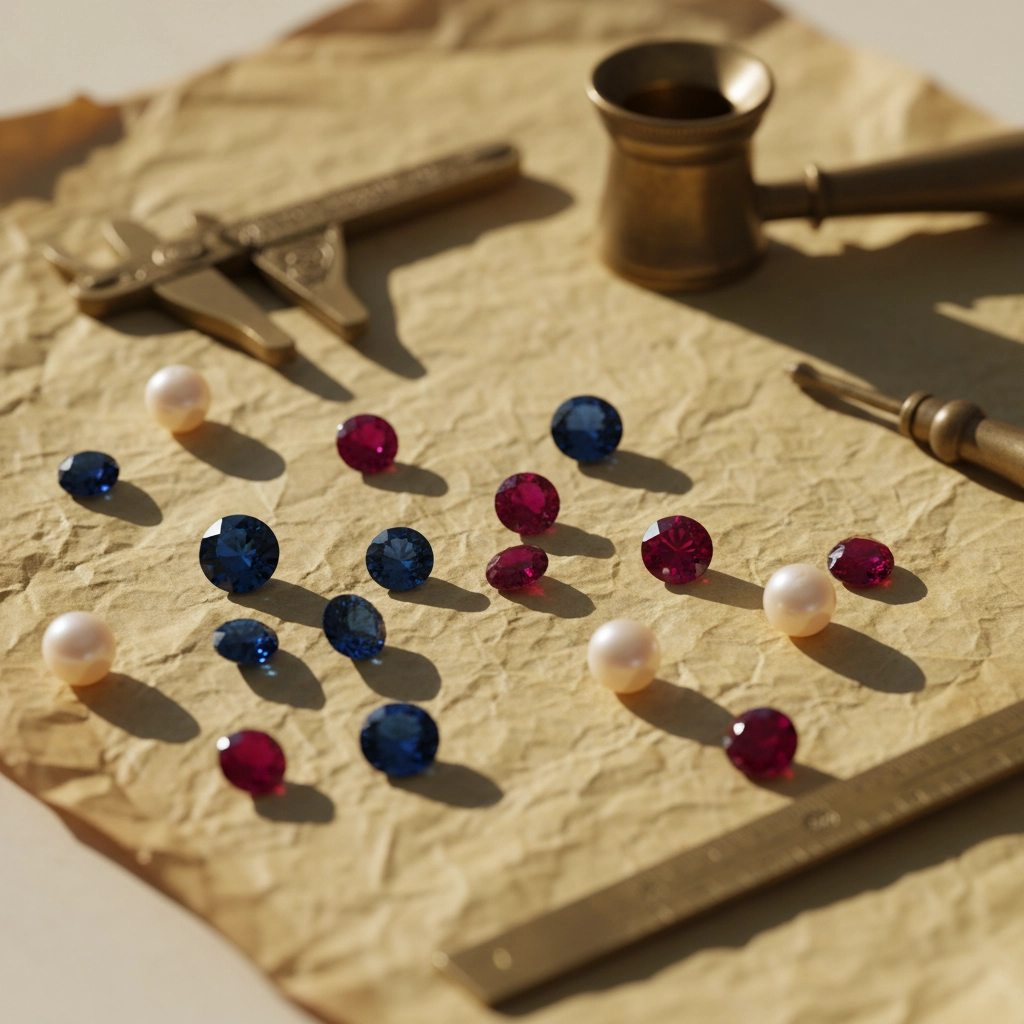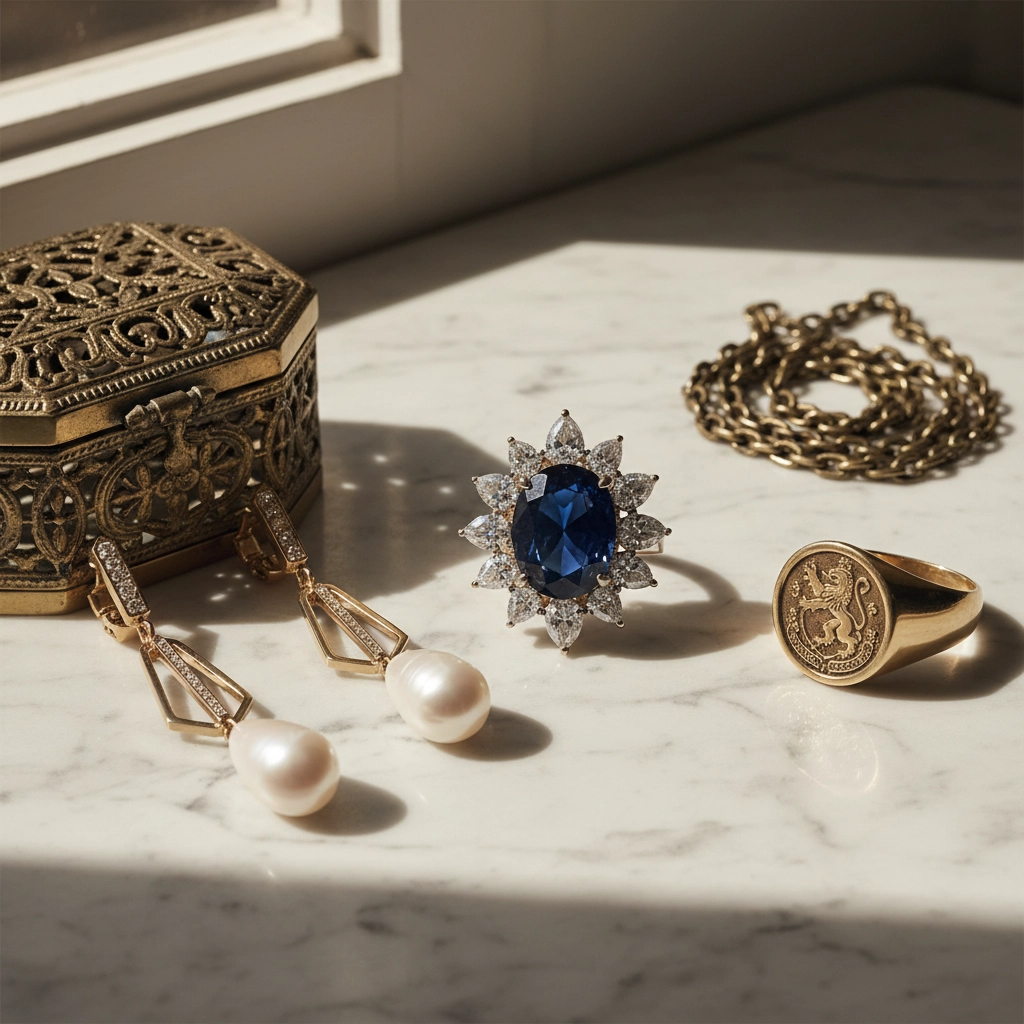Signature Saturdays: Royal Jewels Hidden Meanings : Crowns, Scepters, and the Power Pieces of History
Have you ever wondered what it feels like to hold centuries of power in your hands? I've always been fascinated by the weight: both literal and metaphorical: that royal jewelry carries. When I think about the Crown Jewels sitting in the Tower of London, I'm not just picturing sparkly objects behind glass. I'm imagining the trembling hands of monarchs who first wore these pieces, the whispered prayers during coronations, and the silent messages these jewels have been sending for hundreds of years.
Today, let's dive into the secret language of royal regalia: because trust me, every crown, scepter, and orb tells a story that goes far deeper than their dazzling surfaces suggest.
The Crown: More Than Just a Pretty Hat
When you see a crown, what's your first thought? Power, right? But here's what most people don't realize: crowns aren't just symbols of authority; they're literal bridges between heaven and earth. Take St. Edward's Crown, used exclusively for British coronations since 1661¹. This isn't just jewelry; it's a sacred vessel that transforms ordinary humans into anointed rulers.
The Imperial State Crown tells an even more incredible story. Sitting pretty at its heart is the Cullinan II diamond: a whopping 317.4 carats that ranks as the second-largest diamond in the world². Can you imagine the moment when that massive stone was first set into the crown? The craftsmen must have known they were creating something truly legendary.

But here's where it gets really interesting. The Crown Jewels collection contains over 23,000 gemstones across 140 ceremonial objects³. Each one was carefully chosen not just for beauty, but for meaning. Every ruby, every sapphire, every pearl whispers a different aspect of royal virtue.
Scepters: Authority Made Tangible
I love thinking about scepters because they're essentially the world's most expensive magic wands. When a monarch grips the Sovereign's Sceptre with Cross during coronation, they're literally holding the physical manifestation of their right to rule⁴. It's not just ceremony: it's transformation.
The symbolism runs deeper than you might expect. Ancient rulers understood that people needed to see power to believe in it. A scepter extends the royal presence, making every gesture a statement of authority. When I work with clients choosing statement pieces, I often think about this concept. How does the jewelry you wear extend your personal power? What message are you sending when you walk into a room?
The Orb: Holding the World in Your Palm
Of all the royal regalia, the Sovereign's Orb might be my favorite piece: and here's why. This golden sphere topped with a cross doesn't just represent earthly power; it symbolizes the entire cosmic order⁵. During coronation, when this sacred symbol is placed into the ruler's right hand, it's saying something profound: "You hold the world, but Christ holds you."

The current Sovereign's Orb dates back to Charles II's coronation in 1661 and contains 365 rose-cut diamonds, 9 emeralds, 9 sapphires, 18 rubies, and 266 cultured pearls⁶. But those numbers aren't random: 365 diamonds for the days of the year, representing the eternal nature of divine rule. Even the placement of each gem was intentional.
The orb's origins trace back to Roman depictions of Jupiter holding dominion over the world⁷. Byzantine emperors adopted this symbol, and Medieval European kings added the Christian cross to show that earthly power must bow to divine authority. It's incredible how one piece of jewelry can carry thousands of years of evolving meaning.
The Secret Language of Gemstones
This is where my jeweler's heart really starts racing. Royal jewelry isn't just about showing off the biggest rocks: it's about communicating specific virtues through color and stone choice.
Sapphires have always symbolized wisdom and nobility⁸. When you see deep blue sapphires in a crown, the message is clear: this ruler governs with divine wisdom. Rubies represent passion and power: their blood-red color evoking courage and strength⁹. Emeralds speak to rebirth and eternal life, while pearls represent purity and emotional balance¹⁰.
Think about your own jewelry collection for a moment. Are you unconsciously choosing stones that reflect your personal qualities? I've noticed that clients often gravitate toward gems that mirror their personalities: the bold ones choose rubies, the wise ones pick sapphires, the nurturing souls select pearls.

The famous Hope Diamond perfectly illustrates how gemstones acquire meaning beyond their physical properties. This 45.52-carat deep blue diamond supposedly carries a curse, having passed through the hands of King Louis XIV and numerous wealthy owners who met tragic ends¹¹. Whether you believe in curses or not, the diamond's legend transforms it from mere jewelry into living history.
Hidden Messages in Plain Sight
Here's something that fascinates me: royal jewelry often contains secret symbols and hidden compartments that most people never notice. Medieval and Renaissance rings frequently featured concealed poison compartments (thankfully, we don't recommend those at Peter's Vaults!). Religious symbols were embedded in seemingly secular pieces, allowing monarchs to display their faith subtly.
Many royal brooches and pins contain family crests, personal mottos, or astrological symbols meaningful only to the wearer and their inner circle. It's like wearing your diary as jewelry: personal, intimate, yet hidden in plain sight.
The Weight of History
When King Charles III and Queen Camilla were crowned on May 6, 2023, they weren't just participating in pageantry: they were continuing an unbroken chain of tradition stretching back over a thousand years¹². The same regalia that crowned their ancestors rested on their heads, connected them to centuries of British history.

I often wonder about the emotional weight of wearing such historically significant pieces. Can you imagine slipping on a ring that Elizabeth I once wore? Or fastening a brooch that witnessed the signing of the Magna Carta? These aren't just accessories: they're time machines.
Modern Echoes of Royal Power
What strikes me most about royal jewelry is how its influence continues today. The engagement ring Prince William gave to Kate Middleton: originally worn by Princess Diana: created a worldwide sapphire craze¹³. Royal wedding jewelry choices become fashion trends overnight. The hidden meanings embedded in centuries-old crowns still resonate in contemporary design.
At Peter's Vaults, I still see this royal influence. Clients seek pieces that carry personal meaning, that tell their own stories of power, love, and legacy. The cocktail rings that make bold statements, the signet rings that mark family heritage, the gemstone choices that reflect personal values: they're all echoing the same human desire to wear our identity, our power, our deepest meanings on our bodies.
The Eternal Appeal of Symbolic Jewelry
Royal jewels remind us that the best jewelry does more than sparkle: it speaks. It carries messages across time, connecting us to something larger than ourselves. Whether it's a crown that bridges heaven and earth, a scepter that extends personal authority, or an orb that holds cosmic meaning, these pieces prove that jewelry at its finest is wearable storytelling.
The next time you choose a piece of jewelry, ask yourself: what story am I telling? What power am I claiming? What meaning am I carrying forward? Because in the end, we're all royalty in our own lives, deserving of pieces that reflect our deepest truths and highest aspirations.
Cheers,
Peter
Sources:
- Royal Collection Trust, "The Crown Jewels"
- Historic Royal Palaces, "The Imperial State Crown"
- Tower of London Official Guide, "Crown Jewels Collection"
- Westminster Abbey, "Coronation Regalia and Ceremony"
- British Monarchy Archives, "Symbols of Sovereignty"
- Royal Collection Trust, "The Sovereign's Orb"
- Byzantine Studies Institute, "Imperial Regalia Through History"
- Gemological Institute of America, "Sapphire Symbolism"
- International Gem Society, "Ruby Meaning and History"
- Pearl Society International, "Cultural Significance of Pearls"
- Smithsonian Institution, "The Hope Diamond"
- Buckingham Palace, "Coronation of King Charles III"
- British Royal Family Official Website, "Royal Wedding Jewelry Traditions"